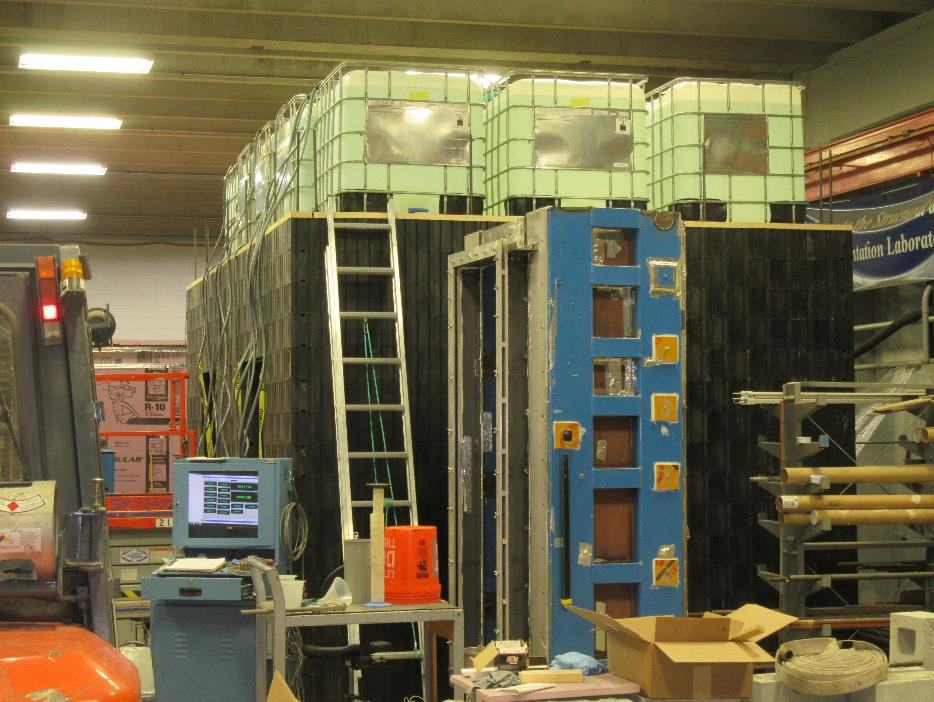A new way of building is upon us. No, it’s not 3D-printing or offsite construction, it’s Lok-N-Blok. On an average day in the late 90’s, Greg Siener was building a retaining wall with a business partner. Offhandedly, Siener said: “You know, if we had some big ‘ol Legos, this would go a whole lot faster.”
The playful comment sat with him overnight. Siener decided to send a sketch idea to his brother, who worked with him as an electrical engineer, and shortly thereafter Lok-N-Blok was born.
THE 26 YEAR-LONG DREAM
Lok-N-Blok wasn’t built overnight. For Siener, the company took its first steps 26 years ago. After the loss of his brother in 2012, Siener decided to leave the company they had started to go all-in for Lok-N-Blok.
The technology behind the Lok-N-Blok design took years of testing. Siener had landed on using polypropylene, a thermoplastic polymer used commonly in the automobile and packaging industry. Not only is the material resourceful, but durable too.
After the first block was created in 2012—weighing in at 16.5 lbs.—five years of rigorous testing ensued.
It wasn’t until June of 2018 that a final approval was rendered. After all, testing criteria had to be built from the ground up, as this brand new way of building warranted its own category and classification.

In 2013, Lok-N-Blok premiered its first prototype block at the International Builders’ Show. As the product made its debut, Siener had to wonder—will people accept it?
Fortunately for him, they did.
Across the board, people were enamored with Lok-N-Blok. They only had one block—now, just over 6 lbs. in weight—to visualize the implications that it would lead to. A brand new building category to the industry.
By 2019, the first structure using Lok-N-Blok technology was built. And by 2022, the company officially launched its product at the very place it’d captured initial interest—the NAHB International Builders’ Show.
@constructutopia What do you think of a home built out of “Legos”? ? #fyp #ibs2020 #internationalbuildersshow #loknblok ♬ MOMENTS IN LIFE - Turreekk
IMPLICATIONS FOR A NEW WAY TO BUILD
Since its official manufacturing debut at IBS 2022, Siener and the Lok-N-Blok team have garnered massive industry interest—from industrial, to commercial, to residential development.
The extremely high demand was an unexpected surprise for the company.
“We always knew that people liked what we were doing, but I did not expect this much interest,” says Siener.
It comes at no surprise, then, that several humanitarian organizations have expressed interest in implementing the product. Lok-N-Blok is perfect from a volunteer standpoint, according to Siener, as it doesn’t require the same training and trade skills that wood construction does.
He notes that the build times using Lok-N-Blok will be 60–70% more efficient, and ten times faster than traditional construction as well.
From the start, Siener wanted the product to be as green as possible, using recycled materials with all natural mineral additives. Fortunately for the company, the polypropylene-based material is considered a green plastic, and is abundantly available even in today’s material shortage crisis.
For now, the planned implementations of the product are in the midwest. Particularly, Mayfield and Western Kentucky, where tornados ravaged the state in December.
The company also anticipates their product being extremely beneficial to the Florida Gulf Coast and similar areas—given the 250 mph wind resistance of each structure.
In fact, the first residential home built using the polypropylene technology will be a replacement home for a Kentucky couple, who had lost their previous home to a tornado disaster.
After that, Siener hopes to have at least a dozen homes across the country in the early stages of construction by the middle of May.
“We have a Cadillac system that we’re not charging a Cadillac price for,” says Siener. “The goal is not to try and sell our product at a high margin; we’re trying to create a position for ourselves in the marketplace while providing a superior product.”
For now, we’ll have to wait and see how the implementation of the product goes. In the meantime, builders wanting to learn more about the product and its implementations can download the quick start design guide below—provided by the Lok-N-Blok team.
